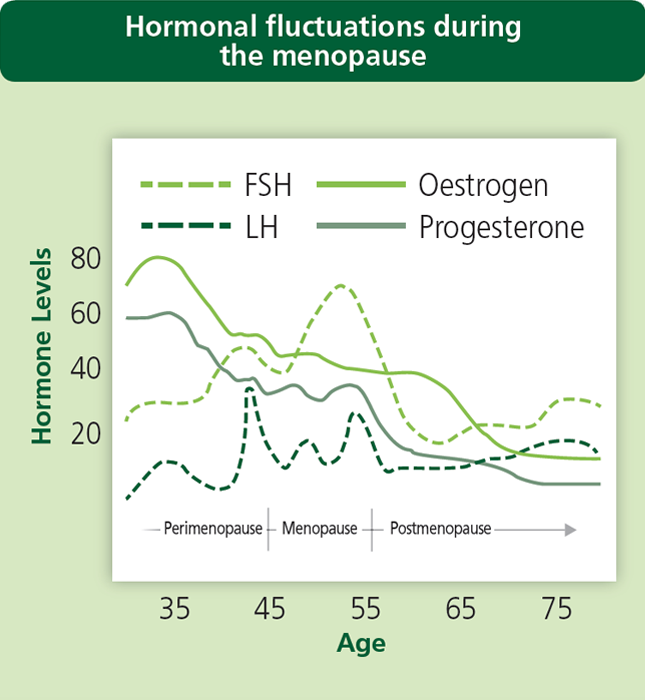The menopause is a fact of life for women, and few get through it without experiencing any symptoms at all. In order to understand the problems that women may experience as they go through €the change€, it is helpful to know a little about what is happening in the body.
 Unlike men, who can usually produce sperm €“ albeit in diminishing quantities €“ until they die, women only have a certain number of eggs present in their ovaries when they are born. As this supply approaches its end, usually at around the age of 45-50, the quantity of oestrogen in the body starts to fall as a result. Because oestrogen normally controls the production of follicle stimulating hormone (FSH) and luteinising hormone (LH), the decreasing amount in the body means that levels of both FSH and LH start to rise. This relative imbalance disturbs the menstrual cycle, making periods irregular, and also causes other symptoms such as night sweats and hot flushes. This period of time is known as the perimenopause, and can last for months or even years.
Unlike men, who can usually produce sperm €“ albeit in diminishing quantities €“ until they die, women only have a certain number of eggs present in their ovaries when they are born. As this supply approaches its end, usually at around the age of 45-50, the quantity of oestrogen in the body starts to fall as a result. Because oestrogen normally controls the production of follicle stimulating hormone (FSH) and luteinising hormone (LH), the decreasing amount in the body means that levels of both FSH and LH start to rise. This relative imbalance disturbs the menstrual cycle, making periods irregular, and also causes other symptoms such as night sweats and hot flushes. This period of time is known as the perimenopause, and can last for months or even years.
The menopause itself is said to have happened when the pattern of low oestrogen and high FSH and LH has become established and a woman has stopped her periods altogether. In the UK, most women experience this in their early 50s. It can happen prematurely (before the age of 40), most commonly because of a genetic cause, but also due to an autoimmune disorder such as type 1 diabetes or a thyroid condition. It can also be triggered by medical treatment such as chemotherapy, radiotherapy or certain types of surgery, and as a result of infection-induced failure of the ovaries (e.g. following malaria or mumps).
By the time a woman has not had a period for a year, she is considered to be post-menopausal.
